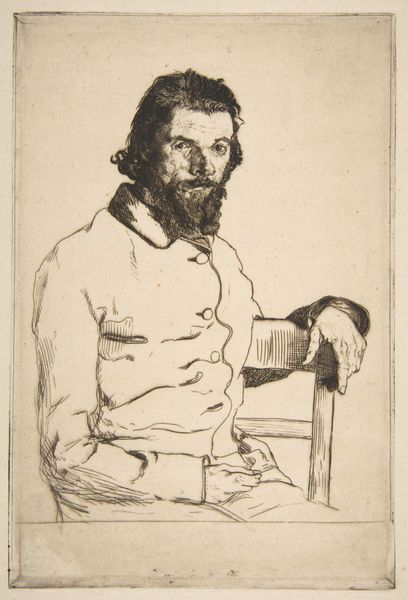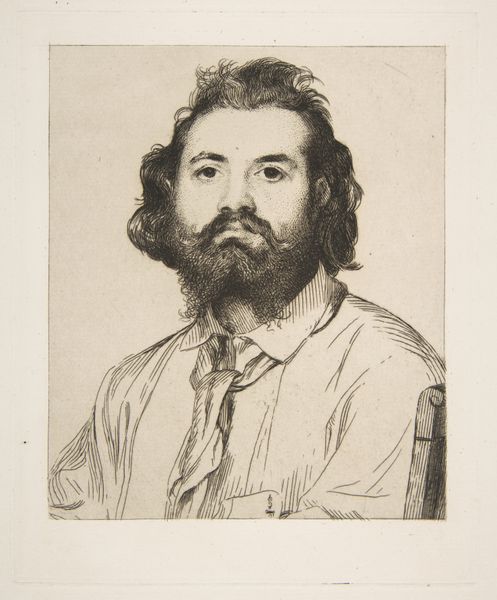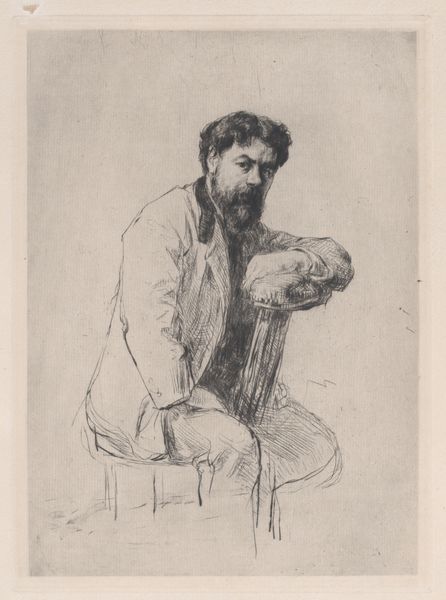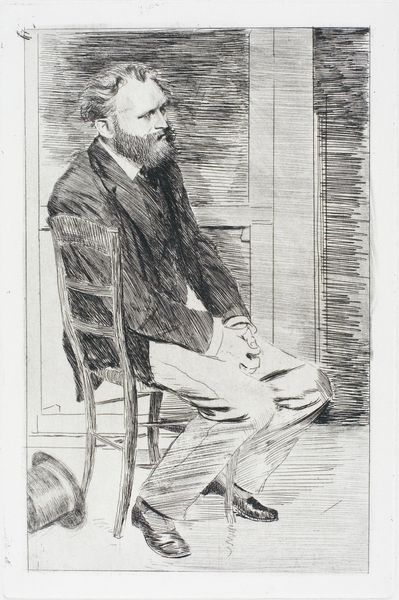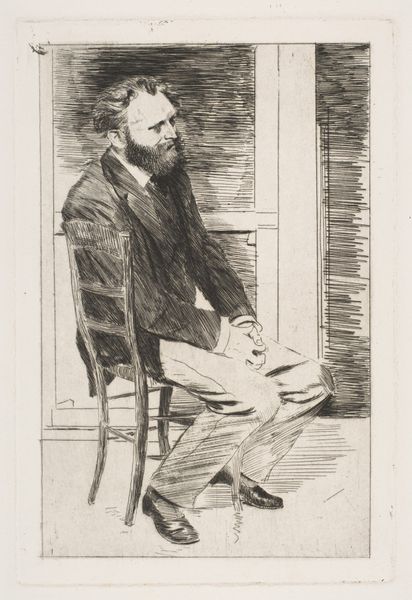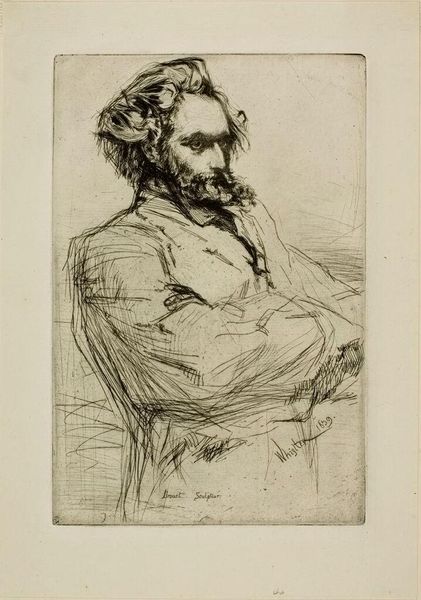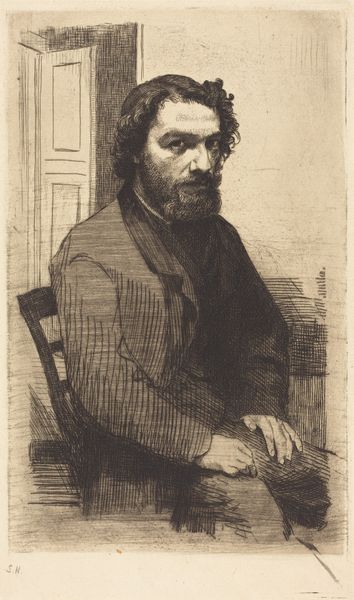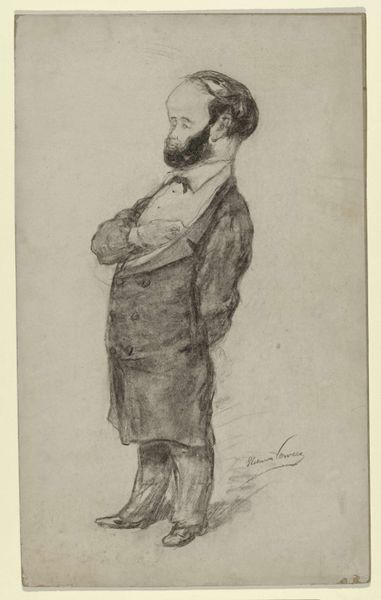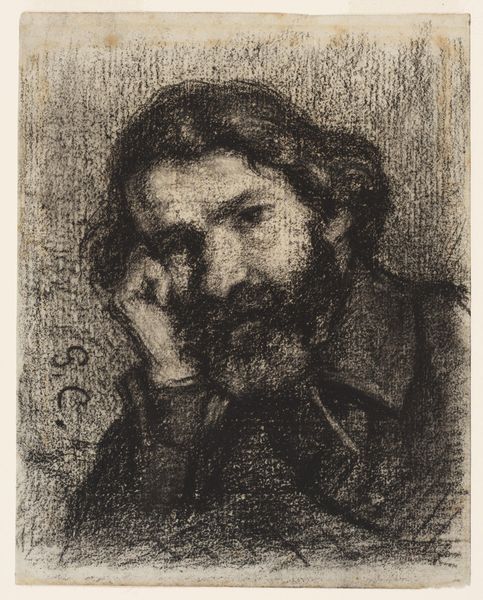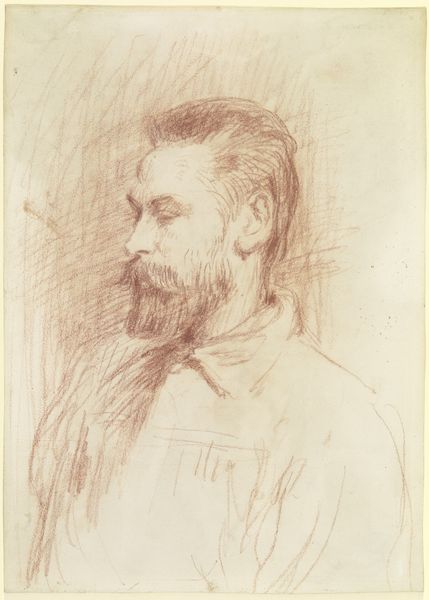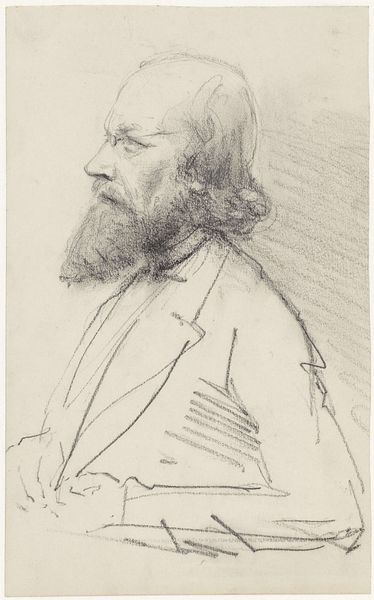
Dimensions: Sheet: 11 in. × 8 3/8 in. (28 × 21.3 cm) Plate: 7 11/16 × 5 11/16 in. (19.6 × 14.4 cm)
Copyright: Public Domain
Curator: This is Félix Bracquemond's etching, "Portrait of Charles Meryon," created in 1853. It's currently held at the Metropolitan Museum of Art. Editor: My first thought? The weight. The etching's lines, while delicate, give Meryon's gaze and the set of his jaw such an incredible presence. A really intense piece. Curator: Absolutely. Meryon was, of course, a significant etcher himself, known for his somewhat fantastical, often dark, depictions of urban spaces, particularly Paris. This portrait gives us a rare glimpse into the artist behind those powerful works. What’s interesting is Bracquemond depicts Meryon as intense but in a controlled, almost academic fashion. Editor: "Academic" is a great word for it. Look at his jacket and the very formal pose. It’s striking, juxtaposed against his more wild hair and beard. The portrait presents us with the Romantic image of the artist, suffering perhaps, but certainly deep in thought. We know that Meryon's life was marked by bouts of mental illness; do you think Bracquemond hints at that vulnerability here? Curator: It's definitely tempting to read the intensity in his gaze through that lens, and situate the work in the 19th century public interest and debate surrounding mental health and its effect on artists lives and productivity. Bracquemond surely knew Meryon’s personal history. Editor: And Meryon circulated within those artistic and intellectual circles shaped by those debates, likely shaping how Bracquemond chose to portray him. He seems aware, self-conscious almost, of how he's being presented. Look at the slight angle of his head; it is like he is performing for us, the viewers. There is definitely an active exchange. Curator: That interplay between artist and subject certainly makes for a compelling image, doesn't it? Editor: Absolutely. And what is fascinating to me is the dialogue between the different stories we can build and unbuild here between artist and subject and what those stories say about the public role of art and artist in society. Thanks for your insights into the history surrounding this great work. Curator: My pleasure. This dialogue reminds us that even a single portrait can be a window into so many rich contexts.
Comments
No comments
Be the first to comment and join the conversation on the ultimate creative platform.
